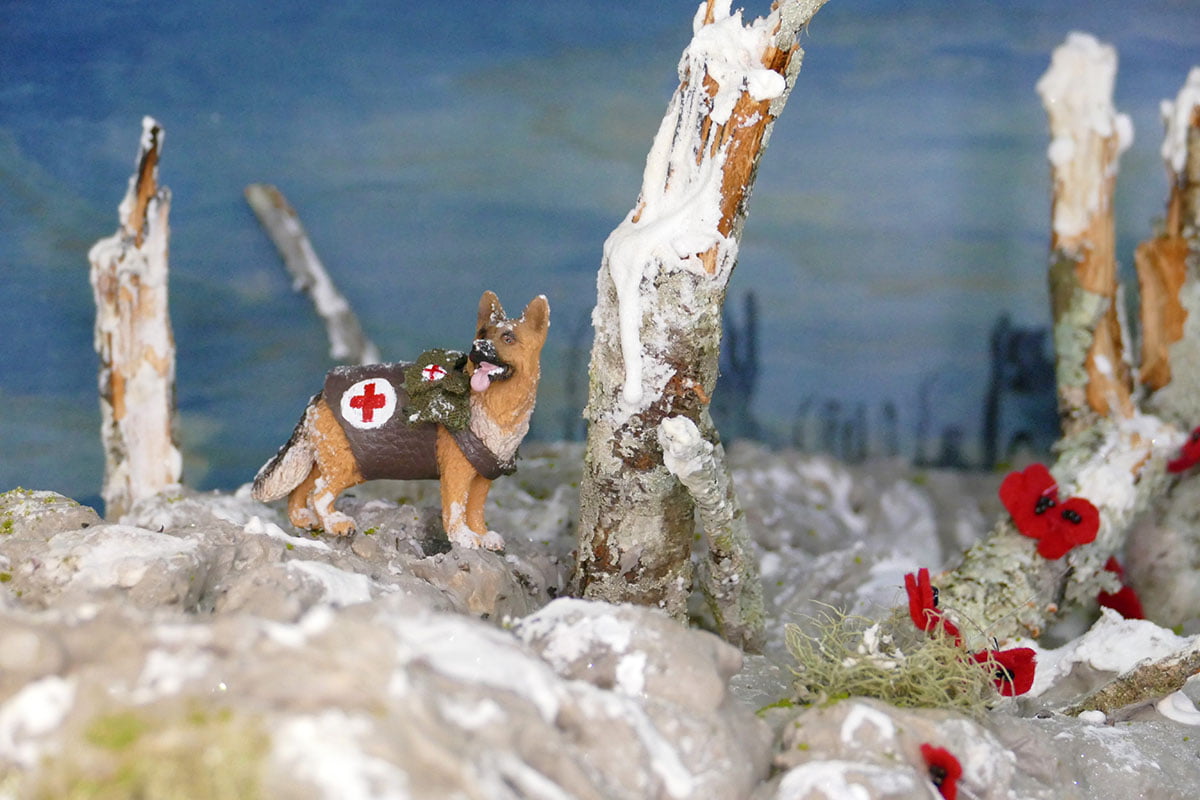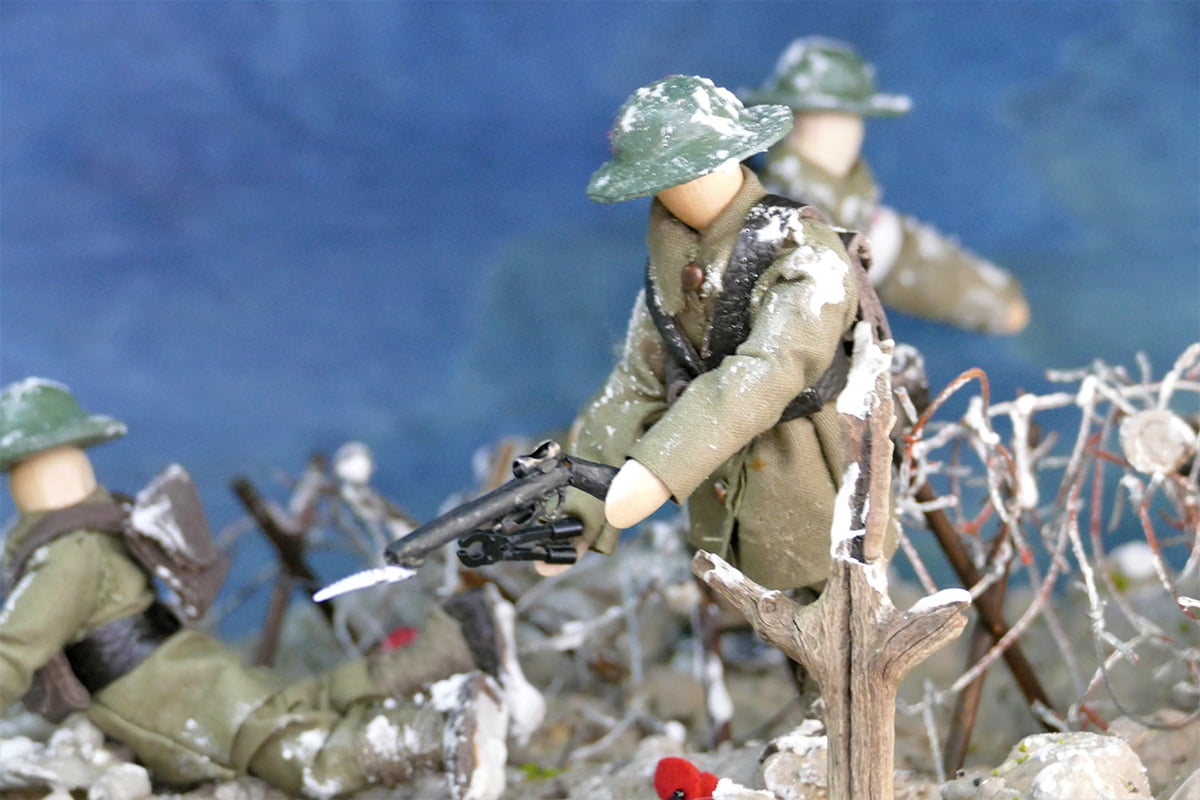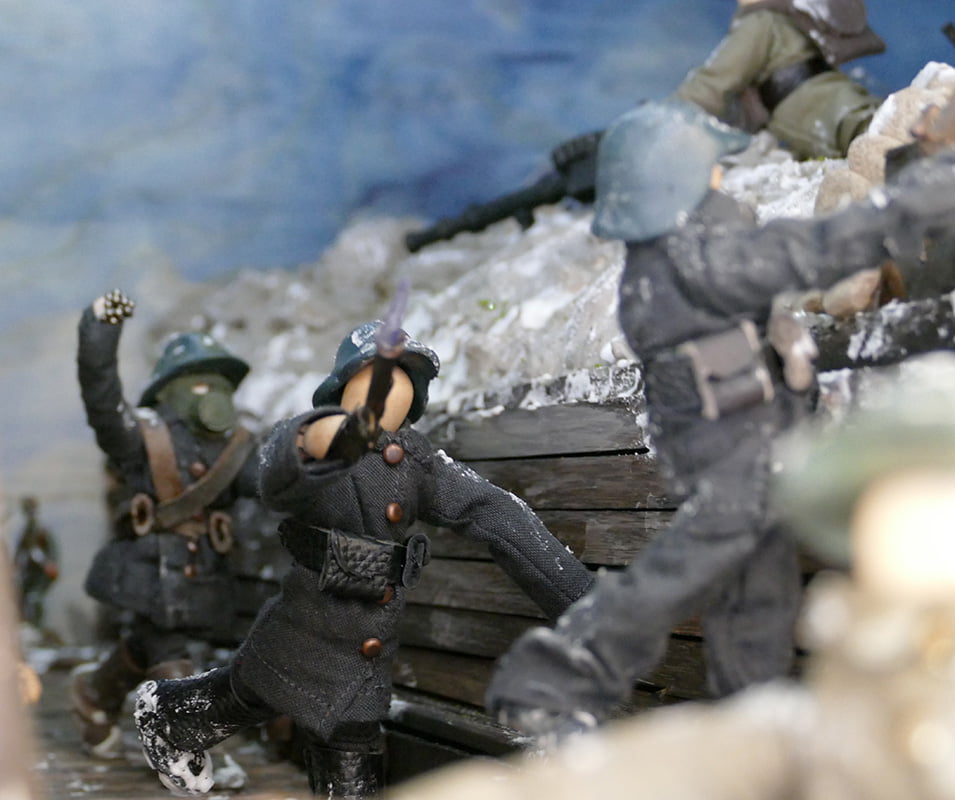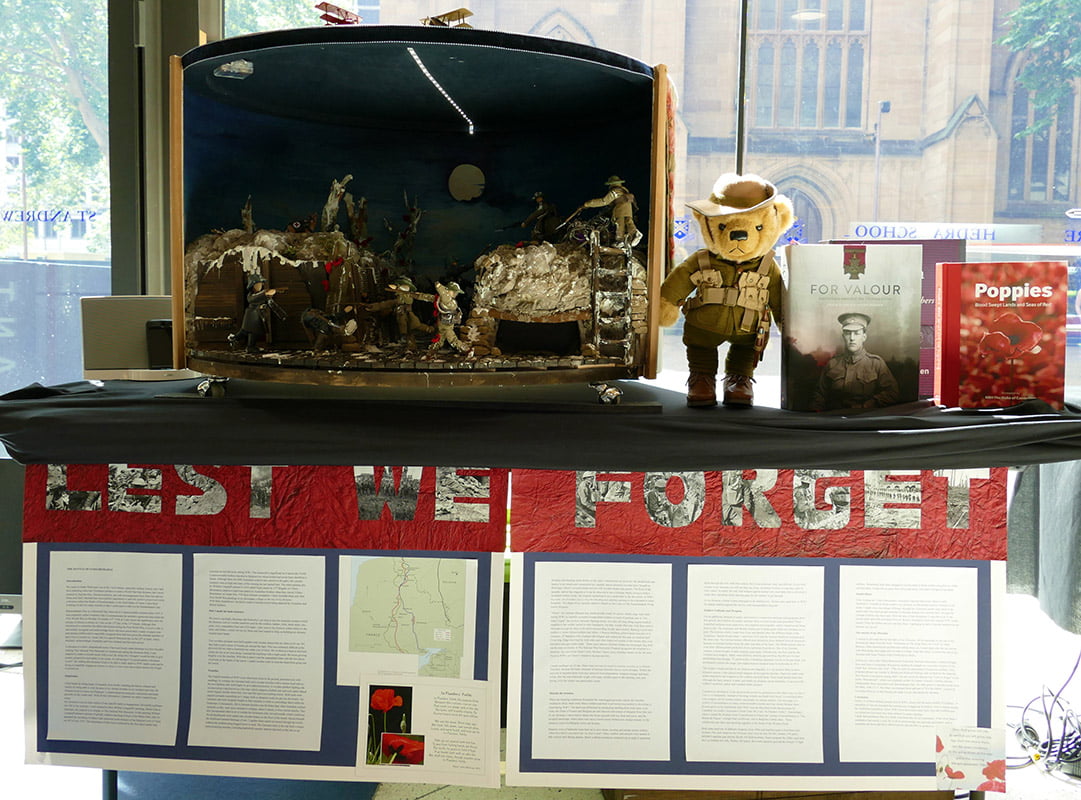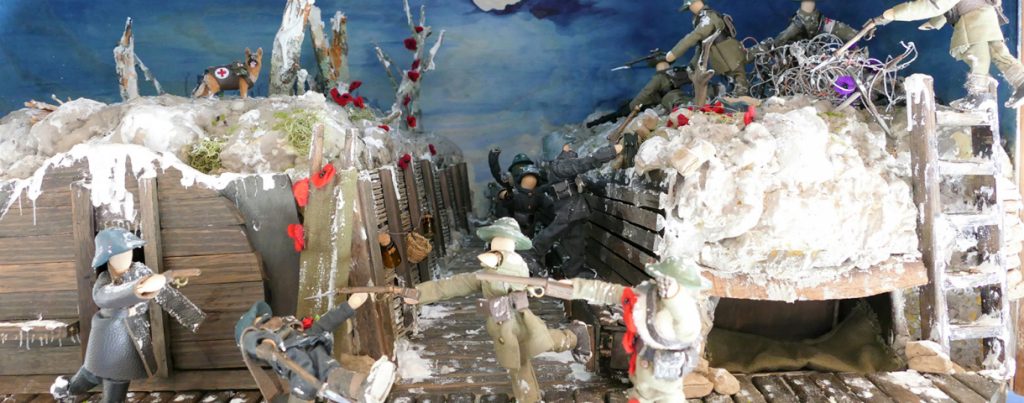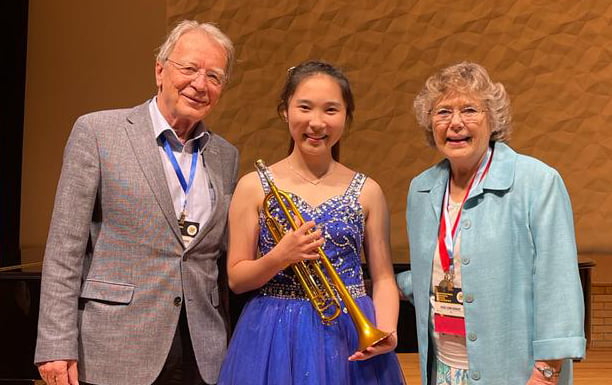For Remembrance Day 2020, one talented Year 4 student put his incredibly intricate display of a World War 1 battefield diorama on display in the St Andrew’s Cathedral School foyer.
Mahé developed a passion for war history after a visit to the Western Front in France and Belgium in 2019 and also a tour of the Australian War Memorial’s dioramas. In this Q&A, Mahé explains how his passion project came together.
When did you start making this diorama?
During lockdown, with encouragement from Miss Sze and my Mum and Dad, I decided to start a passion project and create a diorama called The Battle of Passchendaele, or the Third Battle of Ypres. I have been working on this for many months so that I could share it with the SACS community for Remembrance Day.
What inspired you?
I was first inspired to create this diorama after visiting the Australian War Memorial in Canberra and seeing the amazing dioramas there. I drew on research from books, watching the History Channel and from photos and memories of my own visit to the Western front in France and Belgium last year, where I visited numerous museums, memorials and battle grounds on the Anzac trail. With all this information, I planned out what I wanted in my scene.
What battle does your diorama depict?
My diorama is not an exact replica of any specific battle or engagement, but merely a glimpse into life in the trenches. I took inspiration from William Longstaff’s paintings Menin Gate at Midnight and Night attack by 13th Brigade on Villers-Bretonneux. I have included these and other First World War paintings in my decoupage collage on the top of my diorama. Taking these as inspiration, I decided to make a German trench being attacked by Australian and British Soldiers.
Tell us about some of the symbolism within the diorama.
I wanted my diorama to evoke emotion without being too gruesome. Consequently, instead of showing wounds and death with blood, I symbolised these with poppies, red for human soldiers and purple for animal soldiers. The red poppy is a symbol of remembrance in many Commonwealth counties and was chosen because these flowers grew on the battlefields after WWI and are described in the famous poem by Canadian war medic Lieutenant-Colonel John McCrae, In Flanders Fields. Interestingly, when I visited the Western Front I learned that in France the symbol of remembrance is “The Bleuet de France”, a bright blue cornflower, and in Belgium, a white daisy. These wildflowers are often seen growing together on the fields of the Western Front.
There are some amazing sound-effects accompanying the diorama – how did you go about creating this?
After visiting the Villers Bretonneux Australian Memorial, which is fully interactive, I wanted to add another sensory element to my scene. I made voice recordings of things I thought an Australian soldier may shout in an attack and I also used Google Translate to translate phrases into German that I thought the German soldiers may have said. With the help of Mrs Robertson, I was able to go to the sound studio and, with assistance from Dr Watson, intersperse these into original WWI battle sounds.
What does this diorama mean to you?
Nearly 10 million military people died in WWI, along with the same number of civilians. If casualties of war are included, the numbers are a staggering 40 million, close to nearly double the Australian population. Since WWI, there have been many more wars and conflicts and our armed services have also been utilised for peace keeping. I hope by viewing my diorama, other people may be inspired to learn more about these historical events.
I think Remembrance Day is a vitally important day for all Australians. It has never been a celebration, but merely a way for us all to acknowledge our gratitude and respect, and to remember all those that have offered service and sacrifice to protect us.

